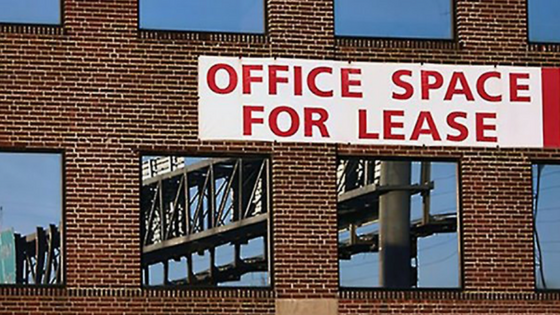We were recently involved in a design-build competition for a new building. Our role was to participate as part of an interdisciplinary team to evaluate competing building designs. The objective was to provide the owner with a clear understanding of the differences between the designs and to determine which design offered the best value. To tackle the job, we applied an integrated design evaluation tool which was used by the team members to assess various elements of the schematic design submittals.
All too often, the evaluation of design in the schematics stage is criticized for focusing too much on image and aesthetics. I can certainly understand why – the site plans, cross-sections, and renderings can be very attractive and highlight design innovation and creativity. I must admit that the renderings in the design-build competition caught my eye and held my attention from the get-go. The competing contractors had very different visions on how the design would fit in to the context of the surrounding buildings and community. But, as we all know, an attractive building doesn’t necessarily mean a building that is functional, cost-effective, or secure.
Components of Integrated Design
Every design evaluation should consider the needs of the owner, the budget, and the goals of the project. Following is a list of six criteria that were tailored for this particular project. The criteria are listed in order of importance to the goals of the project. Each criterion was supported by factors – 150 factors in all – and each factor had an associated performance measure, resulting in an overall score for each design option.
Program of Requirements
For this effort, the competing firms were provided a detailed program of requirements and blocking plans that highlighted adjacencies and the general organization of the building tenants. The owner had invested in a solid programming effort that reflected the needs of the tenants. For this reason, meeting the programming requirements, which were clearly communicated in the solicitation materials, was deemed to be the most important aspect of the evaluation.
(Note: Not all programs of requirement are the same. Some reflect space guidelines that communicate the general size of the project but have not been specifically adapted for the site. For this reason, the relative importance of the program of requirements varies by project.)
Examples of the programming factors included whether the design contained the correct number of tenants, the overall size of tenant spaces, the quantity of spaces within each department, future expansion plans, and parking. I agree it would be odd if a design team left out such critical aspects of the program. But, in my experience, some architectural firms adhere to the program more than others. It is also possible for a design to exceed the program of requirements, which should also be considered in an evaluation. In our case, we had a limited budget, and it was important to our client that the design meet the program fully without exceeding the budget. If one firm was able to creatively provide the “add-ons” and stay within budget, that design would be more favorable from a programming standpoint.
General Building and Operations
Many times, buildings are constructed only to find out that significant operational issues could have been prevented had there been a more integrated review and evaluation of building design. For example, a five-story atrium that is constructed mostly of glass can be a very beautiful and inspiring design feature. However, the expense of replacing windows that leak or crack can be exorbitant, and the ability to provide routine maintenance such as cleaning the glass or replacing lightbulbs can be challenging and can increase operational costs. Not to mention issues with heating and cooling such expansive spaces!
I have also worked in a building designed with an award-winning HVAC system that was certainly quite innovative. However, it was a maintenance nightmare from the beginning. To building management personnel, it was obvious that the HVAC system would be problematic. However, since the design was not evaluated in an integrated fashion with operations in mind, the occupants were left with an ineffective system that has continual maintenance issues.
Other factors related to general building and operations include sustainability, daylighting strategies, and ease of maintaining systems and equipment. These factors are all aimed at making sure the operations of the building are considered from the very beginning to avoid unwanted costs and maintenance issues after occupancy. Ideally, the evaluation team should include a building manager with experience running the day-to-day facility operations.
Image and Aesthetics
Despite my earlier comments, image and aesthetics are still important. We have all seen the innovative building that is designed to be in stark contrast with the surrounding context. However, I think that most designs seek to blend in with and promote the context of the surrounding community and nearby facilities.
Other factors that can be considered under image and aesthetics include whether the entranceway is identifiable and welcoming, how the building orientation responds to the unique features of the site, and whether local materials are incorporated into the design.
Space Functionality and Design Standards
Functionality refers to how well the space is organized and meets the operational needs of each tenant. Even in a schematic design, there should be enough detail to determine the major components of each tenant’s space. The space should be aligned in a way that promotes efficiency and supports the mission and operations of each tenant.
Circulation is a prime example of a functionality feature that can be assessed. Designs can be evaluated on the efficiency of the path of public travel from the entrance through the lobby and to tenant offices. Similarly, most buildings have some form of restricted circulation that can be traced to ensure that restricted and public circulation paths do not mix. Functionality factors can also assess the organization of the building and the adjacencies and proximity of tenant spaces.
Many facility types have design standards or utilization rates that must be adhered to during the design development process. At the schematic stage, you will likely only see the larger blocks of space associated with the tenants in the building. This may include the entrance and exit for tenant spaces, larger conferencing facilities and special space areas, cafeteria, restrooms, etc. The schematics will certainly not detail the layout of individual offices or the size of a workstation, but what can be seen during the schematic stage should adhere to standards that specify the number and size of spaces, and the main adjacencies and circulation paths.
Security
Though you will not have enough detail to evaluate camera angles and the placement of duress alarms by looking at a schematic design, you should be able to determine the security of the site and parking area, appropriateness of major landscaping and hardscaping features, and the placement of security features that support facility screening and monitoring.
Technology
Technology may also have only limited details at the schematic stage. However, I have seen many schematic designs include information on public kiosks, technology in large conferencing centers, the availability of Wi-Fi, and automated building system controls. Technology is becoming a larger factor in building design. Having technology as a part of the evaluation from the very beginning can ensure a design that incorporates and proactively integrates current technology. Designs that address technology up-front often yield a more integrated and technology-enabled facility at occupancy.
Ways to implement design evaluation
There are many ways to implement an integrated design evaluation. You can assemble a cross-section of representatives from different disciplines to discuss the design together, or you can have different disciplines focus on specific aspects of the design independently. We generally find it most effective to have different disciplines review all of the factors, but for each discipline to focus the majority of their effort on their particular area of expertise.
Benefits of Integrated Design
During the design-build evaluation we participated in, there were conflicting responses among the team members. To address these issues, we facilitated a meeting to discuss the areas of disagreement. The collaboration really opened our eyes to how the different disciplines view design. The team members learned a lot from each other through the cross-collaboration.
Using a tool with integrated criteria also prevents one or two criteria from dominating the design selection process, and makes the evaluation of design more objective. The performance measures provide rigor and quantify the responses of the evaluation team. I felt that the process we recently participated in reinforced the owner’s needs and the project goals as they were constantly re-evaluated when analyzing and collaborating on the factors. There is no doubt in my mind that the best design was selected to meet the goals of the project.
Integrated design evaluation presents a great opportunity to holistically assess design options. Though this article has focused on the evaluation of schematic design, the idea behind creating an integrated design evaluation tool is to apply the criteria consistently across the major milestones of design, construction, and post-occupancy. This is one of the best ways to ensure that the owner receives a building that accurately reflects the goals of the project.









.jpg)


.jpg)
.jpg)
-1.jpg)
.jpg)
.jpg)
.jpg)
.jpg)
.jpg)

